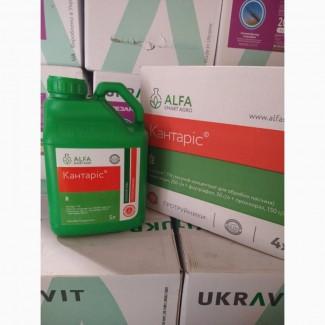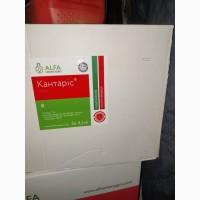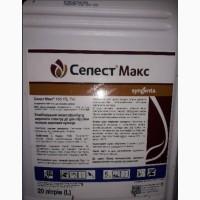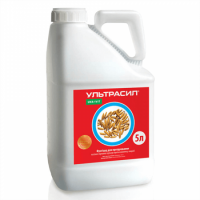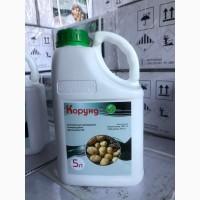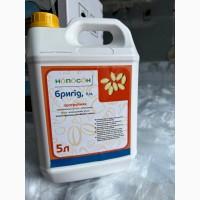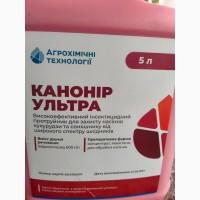/ Fertilizers and plant protection products / Antitoxins / Kantaris - fungicidal-insecticide poisoner for...
For sale / buy
Kantaris - fungicidal-insecticide poison for protecting grains from diseases, Kyivska region.
Price19$
Region:all of Ukraine,
Kyiv region.
(Vyshhorodok)
Updated:
Kantaris - New combined fungicidal-insecticide poison for protectingcereals from a complex of pests and diseases.
Active substance: Thiamethoxam, 250 g/l + prochloraz, 150 g/l + flutriafol, 50 g/l
Formulation: Flowable concentrate for seed treatment
Container: 5 l, the price is for 1 l.
Method of application and cost norms: 160
- Культура - Хвороби - Норма витрати препарату, л/т - Строк обробки - Максимальна кількість обробок
*Winter wheat and spring wheat
- Solid, volatile soot, helminthosporosis and fusarium root rot, seed mold, septoriosis. Wireworms, aphids, leafhoppers, bread fleas, grain flies, bread weevil
-0.8–1.0
- Seed treatment with a suspension of the drug (10 liters of water per 1 ton of seeds)
-1
* Spring and winter barley
-Stone and volatile soot, helmintosporium and fusarium root rot, seed mold, net spot, septoriosis. Wireworms, aphids, leafhoppers, bread fleas, bread weevils
-0.8–1.0
- Spraying seeds with a suspension of the drug (10 liters of water per 1 ton of seeds)
-1
(//tractor-service.com)
The rate of consumption of working fluid: Cereal crops - 10-12 l/t of seeds.
Benefits:
Specialized fungicidal and insecticidal poison for winter andspring cereals cultures.
Comprehensive protection against pests and diseases of seeds and seedlings.
Fast therapeutic and long-term preventive fungicidal action thanks to the combination of active substances with different properties.
100% effectiveness against flying soot.
Provides excellent overwintering of winter crops due to reliable control of snow mold.
Effective control of the bread weevil and reduction of the population of the larvae of the weevil in crop rotation.
A unique combination of active substances for crops with high yield potential and seed farms.
High selectivity to grain crops and absence of re-regulating effect.
The presence of an additional physiological effect due to the anti-stress effect of thiamethoxam.
Increasing the resistance of seedlings to stressful conditions (drought, frost).
Mechanism of action:
Flutriafol inhibits the demethylation process of biosynthesis of sterols and disrupts the selectivity of the permeability of cell membranes of the pathogen. Prochlorase inhibits the biosynthesis of ergosterol and suppresses the formation of cell membranes of the pathogen. Thiamethoxam acts on the nervous system of insects, blocking the movement of nerve signals between nerve endings, as a result of which the insect stops feeding and dies. This mechanism of action excludes the development of cross-resistance (cross-resistance) to other neonicotinoids.
Properties:
The active substance flutriafol has contact and systemic activity and has a fumigation effect. Prochloraz belongs to contact active substances. Prochloraz disinfects the soil near the seeds and the seeds themselves (local disinfection) from pathogens, thereby preventing further infection of the young plant with diseases. The optimal combination of flutriafol and prochloraz in the Kantaris preparation contributes to a synergistic effect and effective protection of grain seedlings. Thiamethoxam has a systemic and contact-intestinal effect. The active ingredient has a high initial activity. The protective action is observed already from the moment of sowing the treated seeds in the soil. Soil moisture partially releases the active substance of the drug in the soil, forming a protective zone around the seeds. Seedlings of plants absorb the active substance of the drug both from the treated seed material and from the soil, and carry it with the current of water to the above-ground parts, ensuring reliable protection of the entire plant. Thus, the death of insect pests occurs after contact with treated seeds, the soil around them, and also after an attempt to feed on plant seedlings.
General recommendations:
Etching is recommended to be carried out 7–14 days before sowing. The process is carried out on special machines designed for semi-wet etching. Before use, the canister with the drug is thoroughly shaken. Kantaris is used diluted with water, depending on the production conditions and the type of machines. Before etching, the inoculum must be cleaned and calibrated, as particles of broken grain, dust and impurities can cause a significant amount of the drug to bind.
Active substance: Thiamethoxam, 250 g/l + prochloraz, 150 g/l + flutriafol, 50 g/l
Formulation: Flowable concentrate for seed treatment
Container: 5 l, the price is for 1 l.
Method of application and cost norms: 160
- Культура - Хвороби - Норма витрати препарату, л/т - Строк обробки - Максимальна кількість обробок
*Winter wheat and spring wheat
- Solid, volatile soot, helminthosporosis and fusarium root rot, seed mold, septoriosis. Wireworms, aphids, leafhoppers, bread fleas, grain flies, bread weevil
-0.8–1.0
- Seed treatment with a suspension of the drug (10 liters of water per 1 ton of seeds)
-1
* Spring and winter barley
-Stone and volatile soot, helmintosporium and fusarium root rot, seed mold, net spot, septoriosis. Wireworms, aphids, leafhoppers, bread fleas, bread weevils
-0.8–1.0
- Spraying seeds with a suspension of the drug (10 liters of water per 1 ton of seeds)
-1
(//tractor-service.com)
The rate of consumption of working fluid: Cereal crops - 10-12 l/t of seeds.
Benefits:
Specialized fungicidal and insecticidal poison for winter andspring cereals cultures.
Comprehensive protection against pests and diseases of seeds and seedlings.
Fast therapeutic and long-term preventive fungicidal action thanks to the combination of active substances with different properties.
100% effectiveness against flying soot.
Provides excellent overwintering of winter crops due to reliable control of snow mold.
Effective control of the bread weevil and reduction of the population of the larvae of the weevil in crop rotation.
A unique combination of active substances for crops with high yield potential and seed farms.
High selectivity to grain crops and absence of re-regulating effect.
The presence of an additional physiological effect due to the anti-stress effect of thiamethoxam.
Increasing the resistance of seedlings to stressful conditions (drought, frost).
Mechanism of action:
Flutriafol inhibits the demethylation process of biosynthesis of sterols and disrupts the selectivity of the permeability of cell membranes of the pathogen. Prochlorase inhibits the biosynthesis of ergosterol and suppresses the formation of cell membranes of the pathogen. Thiamethoxam acts on the nervous system of insects, blocking the movement of nerve signals between nerve endings, as a result of which the insect stops feeding and dies. This mechanism of action excludes the development of cross-resistance (cross-resistance) to other neonicotinoids.
Properties:
The active substance flutriafol has contact and systemic activity and has a fumigation effect. Prochloraz belongs to contact active substances. Prochloraz disinfects the soil near the seeds and the seeds themselves (local disinfection) from pathogens, thereby preventing further infection of the young plant with diseases. The optimal combination of flutriafol and prochloraz in the Kantaris preparation contributes to a synergistic effect and effective protection of grain seedlings. Thiamethoxam has a systemic and contact-intestinal effect. The active ingredient has a high initial activity. The protective action is observed already from the moment of sowing the treated seeds in the soil. Soil moisture partially releases the active substance of the drug in the soil, forming a protective zone around the seeds. Seedlings of plants absorb the active substance of the drug both from the treated seed material and from the soil, and carry it with the current of water to the above-ground parts, ensuring reliable protection of the entire plant. Thus, the death of insect pests occurs after contact with treated seeds, the soil around them, and also after an attempt to feed on plant seedlings.
General recommendations:
Etching is recommended to be carried out 7–14 days before sowing. The process is carried out on special machines designed for semi-wet etching. Before use, the canister with the drug is thoroughly shaken. Kantaris is used diluted with water, depending on the production conditions and the type of machines. Before etching, the inoculum must be cleaned and calibrated, as particles of broken grain, dust and impurities can cause a significant amount of the drug to bind.
|
Shop, contacts | |
Yuriy / feedback, info. / evaluation activities | |
|
Phone:
+38(xxxxxx
show
| |
All ads user ~1000 | |
Ad ID: #949475
(added by registered user, registration date: 2016-08-10)
Added / Updated: 10-14-2025 09:30 (current, until: 14-10-2026)
Permanent Ad Address:
Impressions / views for today: ?, total: ?
Similar ads
Among them there are many interesting ones...
